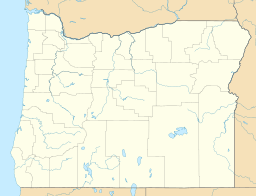Bull Run Lake facts for kids
Quick facts for kids Bull Run Lake |
|
|---|---|

Bull Run Lake and Mount Hood
|
|
| Location | Clackamas / Multnomah counties, Oregon, US |
| Coordinates | 45°27′21″N 121°49′49″W / 45.455951°N 121.830356°W |
| Type | reservoir |
| Primary inflows | Bull Run River |
| Primary outflows | Bull Run River |
| Catchment area | 3.5 sq mi (9.1 km2) |
| Basin countries | United States |
| Max. length | 1.5 mi (2.4 km) |
| Max. width | 0.5 mi (0.80 km) |
| Surface area | 466 acres (1.89 km2) |
| Average depth | 20 m (66 ft) |
| Max. depth | 70 m (230 ft) |
| Shore length1 | 4.2 mi (6.8 km) |
| Surface elevation | 3,162.8 feet (964.0 m) (Oct.) to 3,173.9 feet (967.4 m) (May) |
| Settlements | (none) |
| 1 Shore length is not a well-defined measure. | |
Bull Run Lake is a very important lake in Oregon, USA. It's not a natural lake anymore; it's a reservoir. This means its water level is controlled by a dam. The lake helps provide clean drinking water for many people in Portland, Oregon. It's known for having very clean water. Scientists call this an "oligotrophic lake," meaning it has very few nutrients, which keeps the water clear and pure.
In 1925, a famous geographer named Lewis A. McArthur said Bull Run Lake was one of the two most important lakes in Oregon. He noted it supplied drinking water for about one-third of the state's population.
What is Bull Run Lake?
Bull Run Lake is a key part of the Bull Run River. It is located in the Cascade Range, about 9 miles (14 km) west of Mount Hood. The area around the lake gets a lot of rain every year, more than 110 inches (2,800 mm). This helps keep the lake full of fresh water.
Protecting the Water
Because the lake is so important for drinking water, public access to the area has been strictly controlled for a long time.
- On June 17, 1892, President Benjamin Harrison created the Bull Run Reserve. This was done to protect the lake and its surroundings.
- Water from the reservoir first started flowing into Portland's water system on January 2, 1895.
- Later, on April 28, 1904, President Theodore Roosevelt made the rules even stricter. He banned most people from entering the area. Only government workers and water company employees were allowed in. He also stopped animals from grazing there. These rules helped keep the water supply safe and clean.
How the Lake Changed
Over the years, some changes were made to the lake and its dam to improve the water system.
- In 1915, a new dam was built using timber and rocks. This dam raised the lake's water level by about 10 feet (3.0 m).
- Between 1917 and 1925, people worked to stop water from leaking out of the lake basin.
- In 1961, more leaks were sealed with clay. The dam's outlet, where water flows out, was also updated. New gates were added at different heights to control the water flow better.
Keeping Fish Safe
In 1994, people became concerned about the temperature of the water flowing out of the lake. They worried it might harm fish living downstream. To help the fish, scientists started carefully measuring the lake's water temperature at different depths. They also measured the temperature of the water flowing into the lake. Concrete blocks were put in place to help mix the water. This helped prevent sudden temperature changes that could shock the fish.



